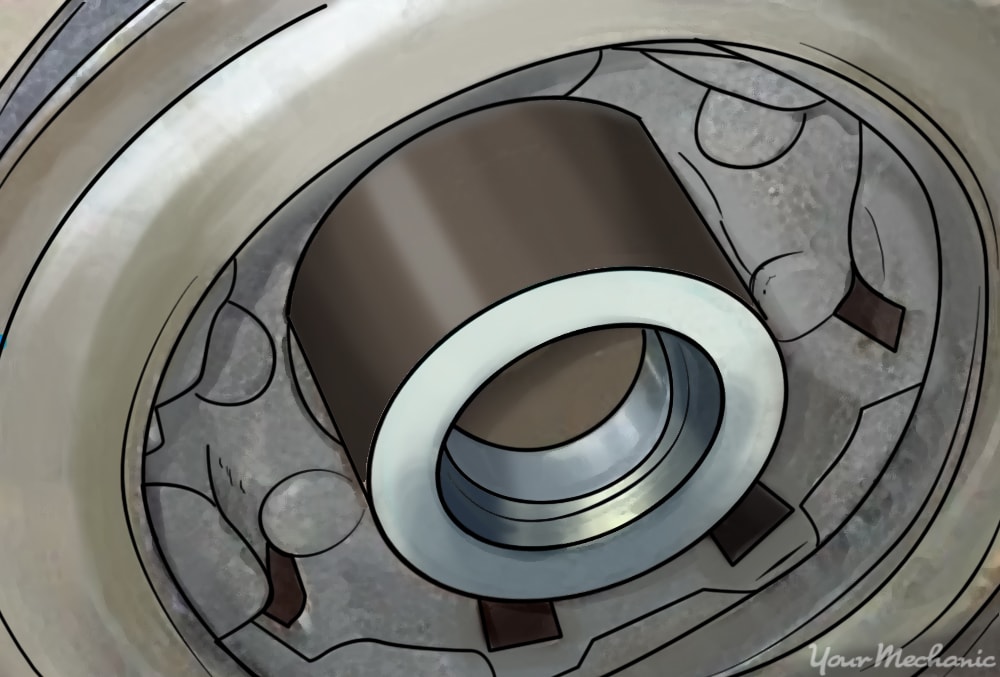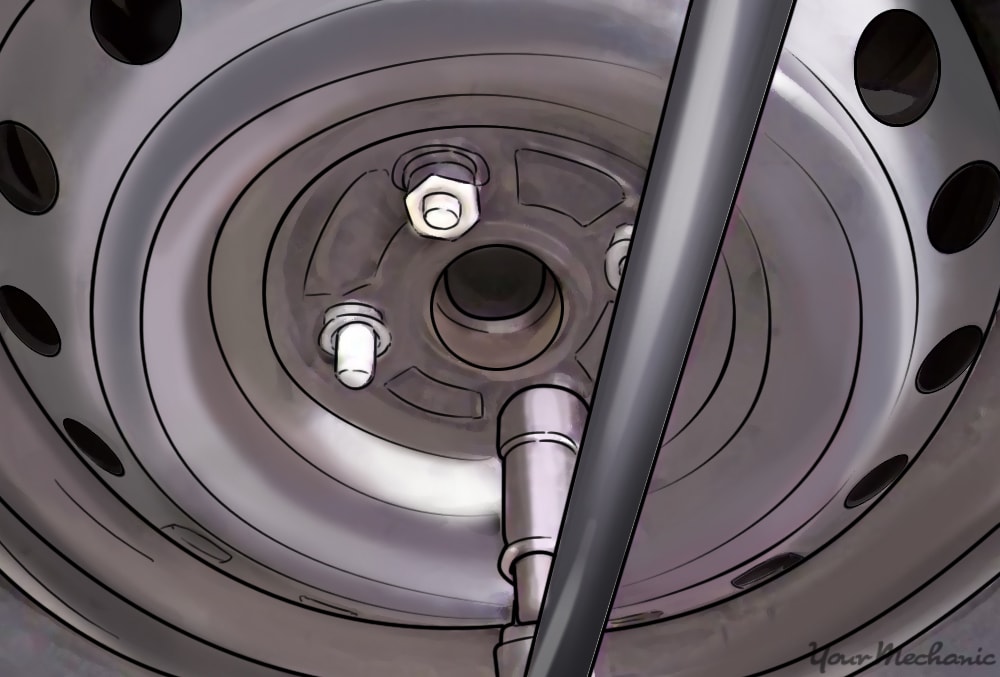

Wheel seals are designed to keep dirt and any other types of debris away from the bearings so that the bearings can stay well lubricated and be able to do their job as they were intended to. If the wheel seal has gone bad, you will notice grease leaking from the wheel bearings and noise coming from the wheels.
Part 1 of 1: Replacing a wheel seal
Materials Needed
- Allen set metric and standard sockets
- Assorted pliers
- Assorted screwdrivers
- Breaker bar ½ Inch drive
- Brass hammer
- Combination wrench set, metric and standard
- Disposable gloves
- Emery cloth/sandpaper
- Flashlight
- Floor jack and jack stands
- Metric and standard socket set ½ inch drive
- Metric and standard wrench set
- Pry bar
- Ratchet ⅜ drive
- Seal remover
- Socket set metric and standard ⅜ drive
- Socket set metric and standard ¼ drive
- Torque wrench ⅜ or ½ drive
- Torx socket set
- Wheel socket set ½ inch drive
Step 1: Prepare your work area. Make sure the vehicle is on a level, safe surface, and you have set the parking brake.
Step 2: Loosen the lug nuts. Use a ½ inch drive breaker bar and a lug nut socket set to loosen all the lug nuts before you jack the vehicle up in the air.
Step 3: Jack the vehicle up and use jack stands. Jack the vehicle up and put it on jack stands. Place the wheels off to the side, away from the work area.
Be sure to jack the vehicle up in the correct location; usually on the sides underneath there are pinch welds you can use to jack from. Then make sure you place the stands on the body or frame and lower it down onto the stands.
Step 4: Remove the old wheel seal. First, disassemble the brakes, starting by removing the caliper bolts. Next, take off the caliper bracket so that you can get to the hub/rotor.
There is a cap on the end of the hub/rotor; use a thin chisel and hammer to pop it off. You can also use a set of large pliers and wiggle it off that way.
Next, remove the cotter pin locking tab and the nut. That will allow the rotor/hub to slide off the spindle with the bearings and the seal attached. Use a seal remover tool to pop the seal out of the back of the hub/rotor.
Step 5: Reinstall the wheel bearings and wheel seal. First, clean all the grit and grime off of the bearings. Use a bearing packer and pack them with fresh new grease. Make sure the inside where the bearings sit is clean, and apply a little bit of new grease along the surface.
Put the rear bearing back in and use a seal installer or a socket big enough to let you hammer the new seal back in straight and flat. Slide the hub/rotor back onto the spindle and reinstall the front bearing along with the washer and nut.
Tighten the nut down hand tight. Spin the hub/rotor until it has some resistance on it. Back the nut off a tiny increment, then install the nut guard and cotter pin.
Put the cap back on using a hammer until it is flush, then start reassembling the brakes. Bolt the brake caliper bracket to the spindle, then place the pads back onto the bracket. Put the caliper back on and torque all the bolts to specification, which can be found in the service manual or online.
Step 6: Reinstall the wheels. Place the wheels back onto the hubs using the lug nuts. Snug them all down with a ratchet and socket.
Step 7: Jack the vehicle back off the jack stands. Place the jack in the correct spot under the vehicle and jack the car up until you can remove the jack stands. Then you can lower the vehicle back onto the ground.
Step 8: Torque the wheels. Most cars use a torque from 80 ft lbs to 100 ft lbs. SUVs and trucks usually use anywhere from 90 ft lbs to 120 ft lbs. Use a ½ inch torque wrench and torque the lug nuts to the proper specification.
Step 9: Test drive the vehicle. Test drive the vehicle to make sure that it is running smoothly and there are no clicks or thumps in the front end. If everything feels and sounds good then the job is complete.
Replacing a wheel seal can be done at home with the right set of tools. But if you’re lacking the tools or experience to complete this job on your own, YourMechanic offers professional wheel seal replacement performed at your home or office.











